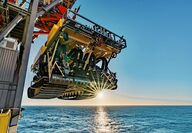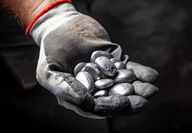Sorted by date Results 1 - 9 of 9

Redox flow batteries are just beginning to hit their stride. Although vanadium is an abundant element, it is quite rare in its metallic form. That fact, combined with its position as a strategic metal for industry, national defense, and the green energy transition, has put it squarely on the list of critical minerals. According to the United States Geological Survey (USGS), "Estimated U.S. apparent consumption of vanadium in 2023 increased by 27% from that in 2022....

Incalculable riches, delicate ecosystem, and the green energy future. Deep-sea mining has captured the world's attention as a uniquely promising source of the metals needed for lithium-ion batteries powering the green energy future and a bitterly controversial topic of debate. Undersea deposits contain quantities of nickel, cobalt, copper, and manganese sufficient to replace every U.S. car on the road today with an electric vehicle. They also host some of the most diverse, lit...

Nickel's continuing journey toward clean processes and domestic production. Nickel has a complex relationship with the ongoing energy transition: It provides relatively inexpensive energy density and greater capacity to the lithium-ion batteries powering electric vehicles and storing clean energy, helping to lower the cost of each kilowatt hour. Its properties have been instrumental in untethering the portable electronics we use every day and incorporating clean power...

Indispensable, expensive, and rare – PGMs get a green upgrade. Back in 1950, the first catalytic converter in the United States was a box bolted onto a car's undercarriage to reduce tailpipe emissions. It was patented by French mechanical engineer Eugene Houdry, who was concerned about the effects of automobile exhaust on the good people of Los Angeles. And it would have worked if it had not been for the octane-boosting lead then being added to fuel, which could choke any c...

Will the controversial metal find its place in green tech? About 30 years ago, nobody thought much about cobalt. Today, this metal, with myriads of uses, is one of those elements that gets dragged into the spotlight due to the role it plays in electric vehicle batteries, with critics citing the disparity between the environmental and social costs of producing cobalt and the green tech solutions this critical metal enables. But we can't build a clean energy future without...

Lithium is an indispensable element in the clean energy transition for several key reasons; like all alkaline metals on the periodic table, it has one more electron than it strictly needs, and this tendency to shed electrons makes it well-suited for passing them back and forth between cathode and anode, charging and discharging thousands of times without degradation. Pure lithium does not occur in nature, but traces are found throughout nearly all igneous rocks, mineral...

While most leaders in the clean energy sector strongly indicate the concept of solid-state batteries is better, a few hurdles have long held this superior rechargeable battery in the realm of pacemakers and smartwatches, and out of electric vehicles where they are desperately needed. Solid-state technology replaces the liquid electrolyte in lithium batteries with a solid ceramic or polymer material. This increases energy density, stability, and heat resistance. For EV...

While lithium has been the poster child for optimism and controversy in equal measure, nickel has its own crucial role to play in the batteries powering the clean energy future – increasing range and capacity – but is traditionally carbon-heavy to produce. For nickel, the industry's focus has been twofold – obtaining enough and moving the needle between untenable quantities of emissions from mining and processing and the battery and alloying metal's necessary inclusion in ne...

The world's leading mining companies have a big problem – with the industry being transformed by a mad rush to acquire raw materials supporting the worldwide energy transition, and mining companies' sweeping moves to drastically reduce their own carbon footprints, the future of labor is becoming more of a hybrid of specialized technical skillsets and traditional experience. Just as the average miner no longer counts a pick and shovel among his toolkit, the miner of today w...